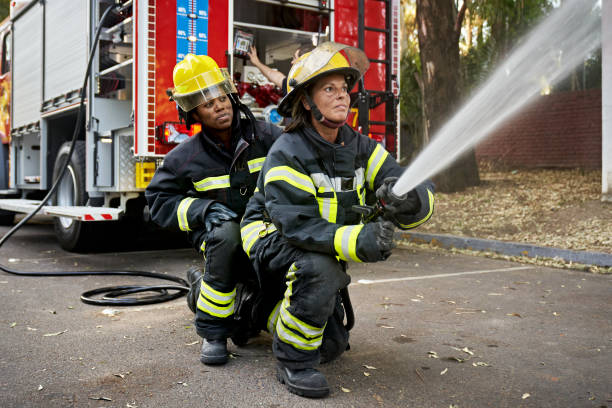Maintaining a fire fighting pump isn’t just about keeping it clean and running smoothly; it’s about ensuring that, in the most critical moments, it’s ready to protect lives and property. Whether you’re responsible for a pump on a commercial site, a rural property, or as part of your emergency planning, your pump’s reliability is key. But how do you make sure it’s always up to the task?
Why Regular Maintenance Matters
First things first, why put time and effort into regular maintenance? Fire fighting pumps Melbourne often sit idle for long periods, and while they’re out of sight, any number of issues can crop up: seals can dry out, hoses can crack, and fuel lines might clog. Then, when the moment to act arrives, you could find that your pump won’t start or, worse, that it fails during operation. With the right approach, though, you can spot potential problems early and keep your equipment dependable and ready.
Key Maintenance Areas to Focus On
To keep a fire fighting pump in top shape, there are a few essential areas you’ll want to pay close attention to. Each component plays a vital role in the system’s overall function, so understanding what to check and why is crucial.
1. Engine Checks
The engine is the heart of your fire fighting pump. Without a smoothly running engine, you’ll be dead in the water (or, rather, out of it). Here’s what to keep on top of:
- Fuel system – Make sure you check the fuel regularly and replace it if it’s been sitting for an extended period. Old fuel can lead to starting problems or clogged filters.
- Oil levels – Low oil can damage the engine, so keep it topped up and change it according to the manufacturer’s guidelines. Dirty oil doesn’t just affect performance; it can cause wear and tear on vital engine components.
- Battery health – If your pump relies on an electric start, a weak battery can mean a big problem. Regularly test the battery, clean any corrosion on the terminals, and charge or replace it as needed.
2. Pump Casing and Hoses
The pump casing and hoses take a lot of wear, especially if you’re moving water that could have particles or debris in it. Inspect these parts regularly to ensure they’re up for the task.
Pump housing
Look for any signs of corrosion or wear. If the housing gets damaged, the pump’s efficiency will drop significantly, and leaks could form.
Suction and discharge hoses
Hoses should be flexible but sturdy, with no cracks or soft spots. Cracks and weak spots can cause leaks, reduce water flow, or, in some cases, prevent water flow entirely.
3. Seals and Gaskets
Seals and gaskets may seem like minor details, but they play a major role in keeping your pump watertight. Inspect these small but crucial components for wear and replace them if you spot any signs of damage. Seals that are in good shape ensure that all water reaches where it needs to be without leaking from the pump or hose connections.
Monthly and Annual Maintenance Tasks
So, how often should you carry out these checks? Here’s a quick guide to a routine that will help you cover all the bases without spending unnecessary time on maintenance.
Monthly Maintenance
A monthly inspection is ideal for spotting minor issues before they become serious problems. During your monthly checks:
- Test the engine by running it briefly to ensure it starts smoothly and runs without hiccups.
- Inspect the fuel and oil levels, and top up as needed.
- Check hoses, connections, and any other visible components for signs of wear.
Annual Maintenance
Each year, it’s wise to do a thorough inspection and possibly even a deeper servicing of the pump. This annual maintenance should include:
- Replacing the oil and fuel entirely to prevent sludge build-up or corrosion.
- Testing the entire system under real operating conditions to make sure it performs reliably.
- Checking the air filter to ensure it’s clean and free of debris. A clogged filter can reduce engine performance and put undue stress on the motor.
Storage Tips to Protect Your Equipment
If you don’t use your pump regularly, proper storage is essential to keep it in peak condition. Before storing it away, especially if you’re putting it aside for a season, make sure you:
- Drain any remaining fuel if you’re storing it for more than a few months to prevent old fuel from gumming up the system.
- Store it in a dry place to avoid corrosion, and ideally cover it with a weather-resistant cover for added protection.
- Disconnect the battery to prevent any drain during storage, and store the battery in a dry, cool location.
Troubleshooting Common Issues
Even with regular maintenance, things can sometimes go wrong. Being familiar with basic troubleshooting can save you a lot of stress:
Pump won’t start
If it’s not firing up, check the fuel and oil levels first, then inspect the battery and spark plug. Sometimes, simply cleaning the spark plug or recharging the battery can do the trick.
Reduced water flow
If the pump is struggling to move water, it may be due to clogged hoses or a dirty filter. Clear any obstructions and see if that restores normal flow.
Leaks in the pump
Leaks can be from damaged seals or cracked hoses. Inspect and replace any damaged parts to stop leaks and maintain pressure.
Be Ready, Stay Safe
The peace of mind that comes from a well-maintained fire fighting pump is well worth the effort. By following a regular maintenance schedule and knowing what to look for in each component, you can count on your pump being ready when you need it most.




